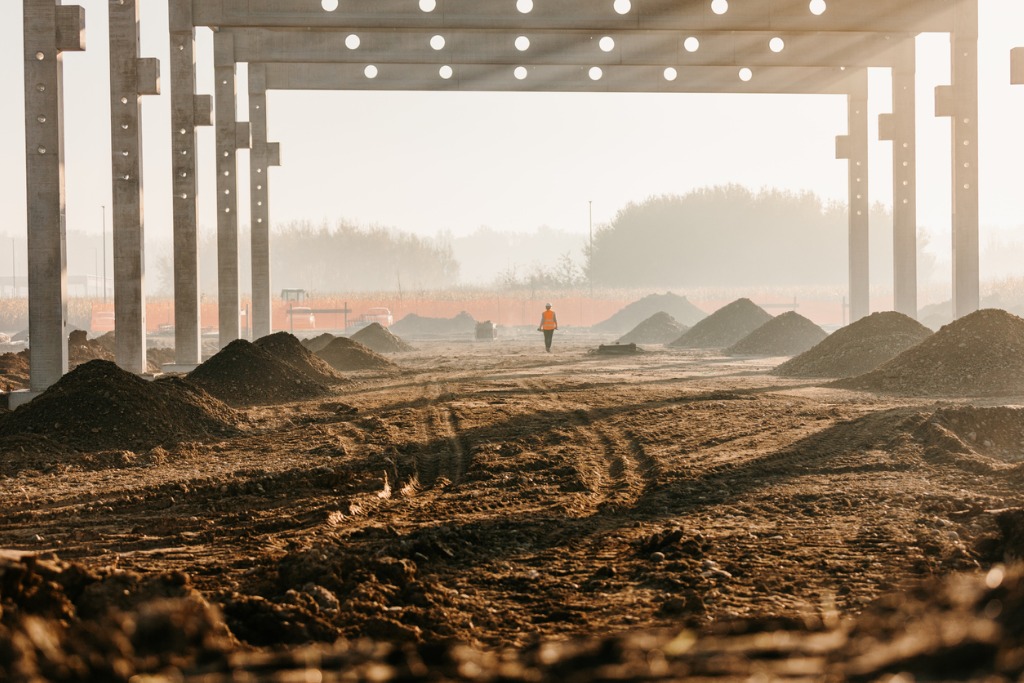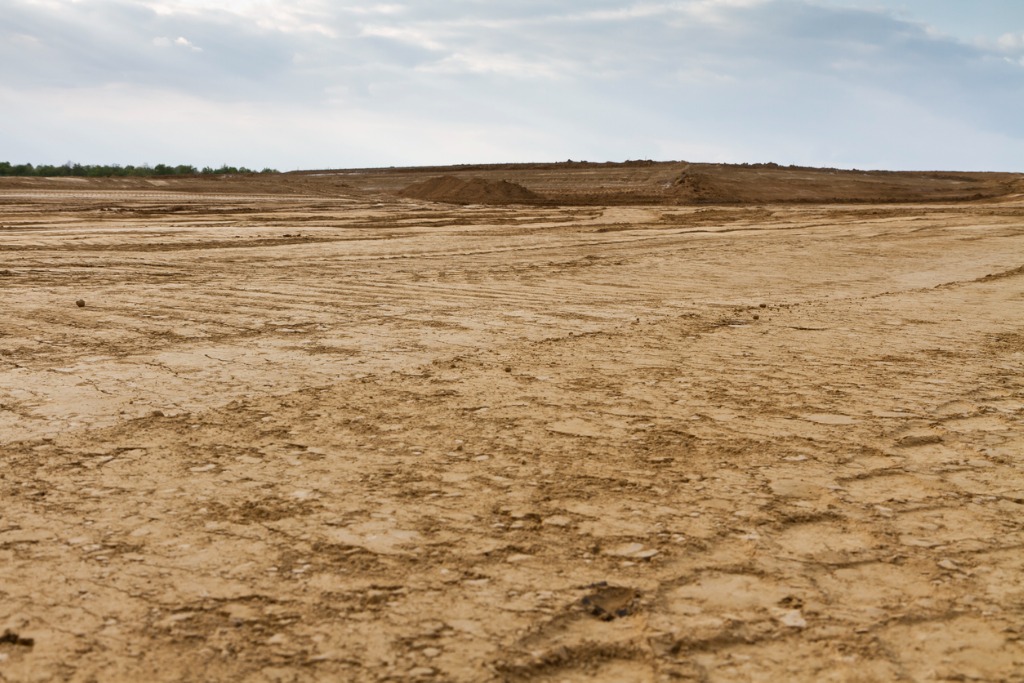When it comes to designing a new structure and finally breaking ground during the construction phase, the soil beneath is extremely important. Because the soil will come into direct contact with the building and serve as its foundation, it will act as a type of load-bearing system, transferring forces from the structure. However, more often than not, the soil is not ready for such responsibility.
Laying concrete, asphalt, or other construction materials for pavement, roads, and structural foundations on unprepared soil can make the job of any construction professional extremely dangerous. Instead of importing and unloading new soil, examining and treating the already existing soil can save a significant amount of time and money. This process is called soil stabilization.
In this article, we’ll examine what soil stabilization is, why it’s important, the various types of soil stabilization, and what the process involves. Continue reading below to learn more about the importance of soil stabilization and find out why McConnell & Associates is the number one choice for premium asphalt and concrete services.
What Is Soil Stabilization?
 When building new roads, buildings, and overpasses, soil plays a vital role in ensuring a successful outcome. If the soil is not stable enough to support a significant amount of weight, it can cause cracks, bumps, swelling, and an overall weakened foundation. This type of damage not only can easily lead to an accident, but the consequences can be even more devastating, dangerous, and costly in the long term.
When building new roads, buildings, and overpasses, soil plays a vital role in ensuring a successful outcome. If the soil is not stable enough to support a significant amount of weight, it can cause cracks, bumps, swelling, and an overall weakened foundation. This type of damage not only can easily lead to an accident, but the consequences can be even more devastating, dangerous, and costly in the long term.
Because natural soil does not always have the necessary properties to support large construction projects, many construction companies schedule soil stabilization services to ensure the best construction and durability,
Soil stabilization is the process of transforming a soil’s physical properties by reducing permeability and increasing its overall strength prior to construction.
By using various engineering techniques, soil stabilization can transform weak soil into a strong foundation and significantly increase its weight-bearing capacity, permeability, compressibility, durability, and plasticity. Soil stabilization also helps to maintain soil moisture content and acts as a cementing and waterproofing agent.
What Is the Soil Stabilization Process?
The soil stabilization process begins with soil samples that are analyzed to determine how much modification is required to permanently stabilize the soil. This testing is designed to establish proper design criteria for determining the appropriate mixture of additives to stabilize the soil and achieve its desired engineering properties.
After the soil has been analyzed, the new material is delivered to the construction site, where it is then thoroughly spread throughout at a predetermined rate that allows a variety of reactions to occur. After the soil has been thoroughly mixed, compaction and grading prepare the stabilized soil for further construction.
Soil stabilization can be useful in a variety of situations, such as roadways, parking lots, development projects, and a variety of other applications where subsoils are needed for construction. Soil stabilization can also be used to treat a wide variety of subgrade materials, including expansive clays and granular materials.
For instance, when using soil stabilization for construction purposes, contractors are typically trying to strengthen the soil or keep it from shifting so that the structure above can last as long as possible. However, for erosion control, soil stabilization is used to keep the top layer of soil in place and prevent wind or water from disturbing the surface.
What Are the Various Soil Stabilization Techniques?
 There are numerous methods that can be used for soil stabilization. However, because not all soil problems can be solved with the same process, understanding the various types of soil stabilization can be highly beneficial.
There are numerous methods that can be used for soil stabilization. However, because not all soil problems can be solved with the same process, understanding the various types of soil stabilization can be highly beneficial.
Let’s look at some of the most common soil stabilization methods that are used today.
Chemical Stabilization
Chemical stabilization is the addition of secondary materials or components to an existing substrate in order to change its performance, density, and ability to support weight.
The materials used in chemical stabilizations help to change the structure of the soil, removing space between particles and making it more compact, leaving no room for air or water to penetrate. Chemical stabilizers include portland cement, sodium chloride, lime, polymers, and others, depending on the individual weaknesses of the soil.
Mechanical Stabilization
Mechanical soil stabilization involves the use of external force or physical procedures, such as compacting or the use of rollers or rammers, to stabilize the soil. In its most basic form, this can involve physically pressing the soil’s surface with a roller or other heavy machinery to pound the materials into a compact state. As a result, the existing substrate gains more solidity and rigidity.
Geotextile Stabilization
Geotextile stabilization is an umbrella term for a variety of flexible and rigid materials that are placed within a layer of the substrate to provide support, improve soil stability, and help with erosion control.
This method is a more long-lasting, environmentally friendly, and dependable method of mechanically reinforcing soil. Because geotextiles come in a variety of sizes and thicknesses, this type of stabilization can be synthesized for specific applications, allowing it to meet a wide variety of specifications.
Electrical Stabilization
Electrical stabilization involves sending a direct current through the soil to drain and discharge water. Draining the soil of excess water not only strengthens it but also creates an anti-seepage curtain and stabilizes slopes, allowing construction to occur in slide-prone areas, trenches, pits, and quarries.
In most instances, electrical stabilization is only used in soil stabilization when no other method is suitable due to the fact that the process requires highly sophisticated and specialized equipment, as well as a large amount of electricity, to produce the desired result.
Learn About McConnell & Associates and Our Soil Stabilization Services
If you’re breaking ground on a new construction project and want to ensure your soil is prepared, McConnell & Associates is here to help.
At McConnell & Associates, we’re proud to be the number one choice for our Midwest customers searching for premium asphalt and concrete services. With over 40 years of experience, our team of highly trained asphalt experts has everything needed to ensure your project is a success.
Whether you’re starting construction on a new building or laying pavement for a new roadway, we always have your best interest in mind and ensure that your project is completed quickly and efficiently.
To learn more about how our premium asphalt services can help you with your next project, contact McConnell & Associates to speak with one of our specialists today.


.png)


